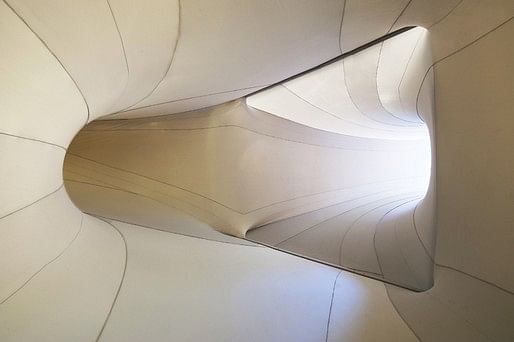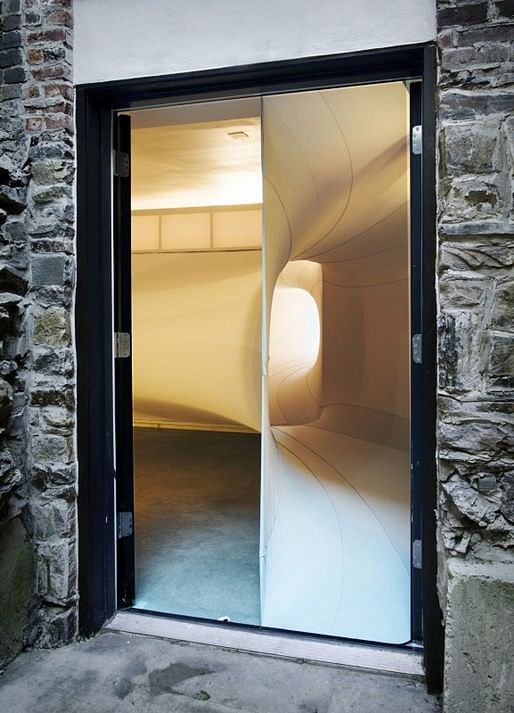

Last week, Modelo had a fantastic interview with Paulis Austrins and Sophia Chang, co-founders of architecture and design firm Studio PSchema. In the interview they share their outlook on design and where they see the architecture industry heading in the future. See the full interview below.
On discovering their voices as designers:
Every experience which influences our worldview also influences our designs. As such, our voices as designers are constantly evolving as our lives evolve. Design is something that permeates our lives and our surroundings and cannot be separated from our work or private lives. While we may not have always been able to articulate our design intent, it has been with us our entire lives.
From working together, we’ve discovered that we both look at the world and approach design in fairly different ways, emerging from our distinct backgrounds. Paulis previously studied and worked in Economics and Information Technology, shaping the way he perceives social outcomes and systems thinking. Sophia’s background in art and social justice gives her a heightened awareness of the people and abstract relationships involved in design.
In the end, design is a constant exploration of life and what it means to share life with the people around us.

Inside “Suspense” a Studio PSchema installation at the INVIVIA Gallery in Cambridge, MA. (Photo by Anita Kan)
On the tools they use:
Every tool shapes its output. It’s important to think critically about tools used and be open to trying or even inventing new ones to really address a specific design exploration. Sometimes this means the newest innovations in software, but pen and paper are also still very prevalent at our office. Hand sketches allow an instant expression of ideas that does not yet happen as easily in the computer, where the user is asked to think in clearly defined surfaces and shapes.
For us the main benefit of 3D software is the ability to iterate quickly and easily. It also allows for the visualization of spacial relationships at scale. We switch between many modeling programs. Rhino, Revit, and 3dsMax all allow for a distinct set of geometric operations and eventual representational output. This is supported by other graphics programs including Photoshop, Illustrator and AfterEffects. The way a project is represented not only helps the client understand the product, it also communicates back to us as designers and helps further the work.
We are both very interested in materiality and craft, so sometimes even with the photorealism and simulation capabilities of the computer, we work with physical models and mockups. They allow us to understand real material characteristics, see a design at full scale, or inhabit space in a way that can also allow clients to get in and play with the pieces.
No single tool is perfect and we feel that as a designer we need to be cognizant of where the tool is leading us so that we may control the tool and not have the tool define the design. Any tool is only as productive as the person wielding it.

Entrance to “Suspense” at the INVIVIA Gallery in Cambridge, MA (Photo by Anita Kan)
On the state of design software today:
The software currently taking over the architecture industry (Revit) is the one that allows the least amount of design creativity. It is being so widely adopted because it is so good for collaboration. Real architecture is not just form, it is also structural, MEP, fabrication and any number of other trades that are involved in taking a project from concept to reality.
Architecture has often evoked a divide between form and function. If Rhino caters to form, Revit caters to function. Software has taken on the divide but has yet to provide a solution to bridge the gap. Software tends to enable one side or the other, but rarely does it place its feet squarely in both camps simultaneously.
On PSchema’s unique approach to design:
We are an architecture and design firm interested in creating dialogue between people and their environments. Architecture is less about the design of objects than it is about the design of processes and experiences. Within these experiences, architecture is able to express ideas and ideals in the form of space.
We believe that a successful design firm is one that is able to take all competing voices and bring them into a cohesive whole. Being able to design and guide the process in a way that sees a compelling outcome for all the parties involved is the true measure of success. The more experience that is brought to the project, the greater the depth the project may attain.
Suspense is a project which plays with the unknown and encourages interaction. The rooms within it are complex and constantly changing and redefining themselves as people move through. Within a fairly small area, visitors are inspired to explore and play with their surroundings and with their fellow visitors, becoming more aware of their own bodies, their relationship to others, and their relationship to their surroundings.

Firehouse7.1 (photo courtesy of pschema.com)
On the Firehouse7.1 project, open and timely communication between all parties allowed the project to come together to a successful conclusion. Our approach allowed the clients to clearly articulate their needs and we were able to respond to them with an intriguing design. The builder was able to take the design and question the aspects of it which were inconsistent with his experience. By allowing this dialog we were able to satisfy the needs of the client while allowing the builder to work in a way that they were able to best utilize their skills and craftsmanship. The final product is one that reflects the strengths of all parties involved. A successful firm is one that not only creates beautiful objects, but also lasting relationships.
On architecture and disruptive innovation:
Disruptive innovation throughout history has come from social change and/or upheaval. Art history tracks closely with these changes but the scale of building requires that architecture lags behind the bleeding edge of innovation.
Technology today is revolutionizing the way we experience our boundaries, by connecting us to a vast world undefined by our physical location. This is generally only appearing in buildings as the introduction of various facades and screens on walls, which are like a sticker — superficial. In art we’re seeing a large body of work emerging which invites the user to become part of the work, much of which is inspired by the capability of technology to not just be a screen but play with the way we move, sound, and breathe. Our bodies respond to space and physical interaction. How does the technology define the relationships between us and the built world? There is so much potential for connected technology in architecture to evolve and speak the language of space and experience within architecture.
At Modelo we want to know what drives the world’s design and architecture talent. This is why we invite select architects and designers to share their stories, philosophies, visions and favorite works with the public — their manifestos. For more information on how we're working to change the architecture and design world at Modelo please visit us at: www.modelo.io.
No Comments
Block this user
Are you sure you want to block this user and hide all related comments throughout the site?
Archinect
This is your first comment on Archinect. Your comment will be visible once approved.